|
Printables |
PowerPoints |
Online exercises |
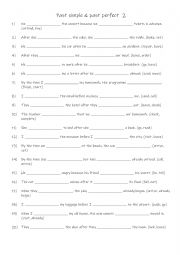
|
A2-B1 Past simple & past perfect 2
Learning the past simple and past perfect tenses is crucial for students as it helps them communicate clearly about past events, showing when actions occurred and how they relate to one another in time. Mastering these tenses improves storytelling, writing, and speaking, enabling students to convey events in a logical and nuanced way. Additionally,...
Level: elementary
Age: 9-100
Type:
Downloads: 114
|
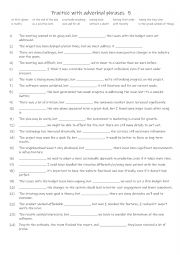
|
B1-C1 Practice with 12 adverbial phrases 5
Learning adverbial phrases are essential for effective and nuanced communication. These phrases allow students to organise ideas, express perspectives, and add emphasis or transitions in both spoken and written English. For instance, they can introduce initial impressions (at first glance), summarise a conclusion (at the end of the day), shift focu...
Level: intermediate
Age: 11-100
Type:
Downloads: 109
|
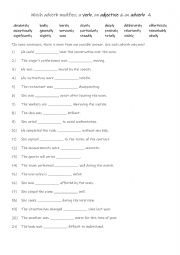
|
Which adverb modifies a verb, an adjective & an adverb 4
First, students need to familiarise themselves with the 21 adverbs and their meanings. Then they read the sentences to see which one is required to complete the gap-fill. Additionally, recognising whether it modifies a verb, an adjective & an adverb. Each type is modified 8 times! Answers on page 2.
Level: elementary
Age: 9-100
Type:
Downloads: 111
|
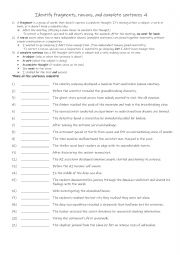
|
A1+-A2 Identify fragments, run-ons, and complete sentences 4
First, students need to familiarise themselves with the 3 types of sentences. Then they read the sentences to work out which one is which. Each type is used 7 times! Answers on page 2
Level: elementary
Age: 9-100
Type:
Downloads: 134
|
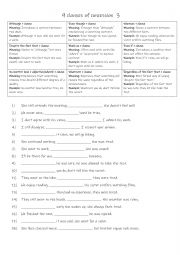
|
B1-B2 9 clauses of concession 3
First, students need to familiarise themselves with the 9 clauses and their meanings. Then they read the sentences to see which one is required to complete the gap-fill. Each clause is used 2 times! Answers on page 2.
Level: intermediate
Age: 10-100
Type:
Downloads: 125
|
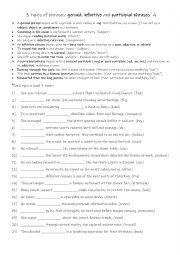
|
B1+-C1 3 types of phrases gerund, infinitive and participial phrases 4
First, students need to familiarise themselves with the 3 types of phrases and their use. Then they read the sentences to work out which one is needed to complete the gap-fill. Each verb pattern is used 7 times! Answers on page 2.
Level: intermediate
Age: 11-100
Type:
Downloads: 124
|
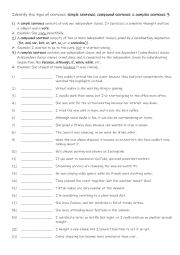
|
A2 Identify the type of sentence simple sentence, compound sentence & complex sentence 3
Students should learn to identify simple, compound, and complex sentences because it helps them write with more variety, organise ideas clearly, understand reading texts more easily, prepare for future learning, and communicate their thoughts more accurately. Each type is used 7 times. Answers on page 2.
Level: elementary
Age: 9-100
Type:
Downloads: 121
|
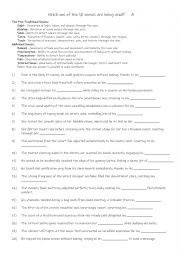
|
A2-B1 Which one of the 10 senses are being used 4
Learning about the traditional and additional senses helps students understand how humans perceive and interact with the world. It highlights how senses like sight, hearing, smell, taste, and touch, along with balance, proprioception, and temperature, provide essential information for navigating and responding to our environment. This knowledge is ...
Level: elementary
Age: 8-100
Type:
Downloads: 118
|
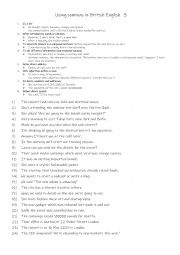
|
Using commas in British English 3
First, students need to familiarise themselves with the 8 reasons why a comma is used. Then they read the sentences and punctuate them accordingly. Answers on page 2.
Level: elementary
Age: 10-100
Type:
Downloads: 108
|

|
A2+-B1 Practise with 12 conditional phrases 4
First, students need to familiarise themselves with the 12 conditional phrases and their meanings and use. Then they read the sentences to see which one is suitable to complete the gap-fill. Each conditional phrase is used 2 times! Answers on page 2.
Level: elementary
Age: 9-100
Type:
Downloads: 131
|
|
|
|
|












